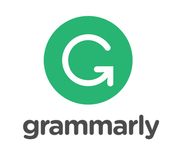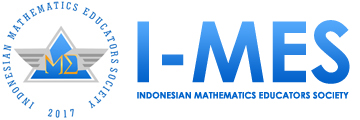ANALYSIS OF SEVENTH-GRADE JUNIOR HIGH SCHOOL MATHEMATICS TEXTBOOKS ON ALGEBRA USING THE PRAXEOLOGY APPROACH
Abstract
Algebra material in mathematics learning plays a crucial role as the foundation for abstract thinking among junior high school students. However, obstacles in task design in textbooks often hinder students' understanding of basic algebra concepts. This study aims to analyze the algebra material in Grade VII mathematics textbooks using a praxeological approach. The research method employed is qualitative descriptive, consisting of observation through selection, categorization, coding, and in situ analysis. The analyzed textbook is the Grade VII Mathematics book published by the Ministry of Education and Culture in the 2017 revised edition. It was chosen due to its widespread use in schools across Indonesia. The main findings indicate that among the four task designs analyzed, many present epistemological and didactic obstacles, such as a lack of emphasis on fundamental algebra concepts and the presentation of unsystematic material. As a solution, this research proposes an alternative task design that focuses on contextual illustrations, independent exploration, and visualizations to enhance learning effectiveness. Although empirical validation has not yet been conducted, the findings provide a foundational framework for developing better algebra learning materials in the future. The implications of this research are expected to assist textbook developers and teachers in creating content that more effectively supports student learning.
Full Text:
PDFReferences
As'ari, A. R., Tohir, M., Valentino, E., Imron, Z., & Taufiq, I. (2017). Matematika Kelas VII Semester 1 (Edisi Revisi 2017). Kementerian Pendidikan dan Kebudayaan.
Bosch, M., Chevallard, Y., García, F. J., & Monaghan, J. (2020). Working with the anthropological theory of the didactic in mathematics education. Routledge. https://doi. org/10.4324(97804).29198
Bosch, M., & Gascón, J. (2006). Twenty-five years of the didactic transposition. ICMI bulletin, 58(58), 51-65.
Brousseau, G. (2002). Theory of didactical situations in mathematics. in Kluwer Academic Publisher. https://doi.org/10.1007/0-306-47211-2
Chevallard, Y. (1992). A theoretical approach to curricula. Journal Für Mathematik-Didaktik: Zeitschrift Der Gesellschaft Für Didaktik Der Mathematik [Journal for Mathematics Didactics: Journal of the Society for Mathematics Didactics], 13(2), 215–230. https://doi.org/10.1007/BF03338779
Chevallard, Y. (2006). Steps towards a new epistemology in mathematics education. In Proceedings of the IV Congress of the European Society for Research in Mathematics Education, 21–30.
Harel, G. (2008). What is mathematics? A pedagogical answer to a philosophical question. Proof and other dilemmas: Mathematics and philosophy, 265-290.
Kusmaryono, I., Basir, M. A., Maharani, H. R., & Wijayanti, D. (2020). Upaya Perbaikan Kesalahan dan Miskonsepsi Guru melalui Pelatihan Kemahiran Mengajar Matematika Bagi Guru Sekolah Dasar. CARADDE: Jurnal Pengabdian Kepada Masyarakat, 3(1), 58-64. https://doi.org/10.31960/caradde.v3i2.461
Nurjanah, N., & Juliana, A. (2020). Hambatan Didaktis Siswa SMP dalam Penyelesaian Masalah Geometri Berdasarkan Kemampuan Persepsi Ruang. Kreano, Jurnal Matematika Kreatif-Inovatif, 11(2), 236-244. http://orcid.org/0000-0001-9274-0804
Putra, Z. H., & Witri, G. (2017). Anthropological theory of the didactic: A new research perspective on didactic mathematics in Indonesia. Jurnal Pendidikan Guru, 2(1), 221-227.
Putra, Z. H., Witri, G., & Sari, I. K. (2020). Pengetahuan Didaktika Calon Guru Sekolah Dasar tentang Pecahan Ditinjau dari Teori Antropologi Didaktik. Jurnal Elemen, 6(2), 244-261. https://doi.org/10.29408/jel.v6i2.2056
Radford, L. (2012). Early Algebraic Thinking Epistemological, Semiotic, And Developmental Issues. 12th International Congress on Mathematical Education Program COEX, Seoul, Korea
Rasmussen, K. (2016). Lesson study in prospective mathematics teacher education: didactic and paradidactic technology in the post-lesson reflection. Journal of Mathematics Teacher Education, 19(4), 301–324. https://doi.org/10.1007/s10857-015-9299-6
Sugiyono. (2014). Metode Penelitian Pendidikan: Pendekatan Kuantitatif, Kualitatif, dan R&D. Bandung: Alfabeta
Suryadi, Didi. (2013). Didactical Design Research (DDR) to Improve the Teaching of Mathematics. Far East. J. Math. Edu. 10 hal.91 – 107
Suryadi, D. (2018). Landasan Filosofis Penelitian Desain Didaktis (DDR). Makalah Bahan Diskusi di Lingkungan Departemen Pendidikan Matematika FPMIPA UPI.
Suryadi, D. (2019a). Penelitian desain didaktis (DDR) dan implementasinya (A. S.Maulida (Ed.)). Bandung: Gapura Press.
Tanujaya, B., Prahmana, R. C. I., & Mumu, J. (2017). Mathematics instruction, problems, challenges and opportunities: A case study in Manokwari Regency, Indonesia. World Transactions on Engineering and Technology Education, 15(3), 287–291.
Wahyudi, T., Zulkardi, Z., & Darmawijoyo, D. (2016). Pengembangan soal penalaran tipe TIMSS menggunakan konteks budaya Lampung. Jurnal Didaktik Matematika, 3(1), 1-14.
Wijayanti, D., & Winsløw, C. (2017). Mathematical practice in textbooks analysis: Praxeological reference models, the case of proportion. Journal of Research in Mathematics Education, 6(3), 307–330. https://doi.org/10.17583/redimat.2017.2078
DOI: https://doi.org/10.37058/jarme.v7i2.13231
Refbacks
- There are currently no refbacks.

This work is licensed under a Creative Commons Attribution-ShareAlike 4.0 International License.
Journal of Authentic Research on Mathematics Education (JARME)
Program Studi Pendidikan Matematika, Universitas Siliwangi
Jl. Siliwangi no. 24 Kota Tasikmalaya - 46115
email: jarme@unsil.ac.id
e-ISSN: 2655-7762
Licensed under a Creative Commons Attribution 4.0 International License
StatCounter:
Detail
Indexed by :


.jpg)
.jpg)



